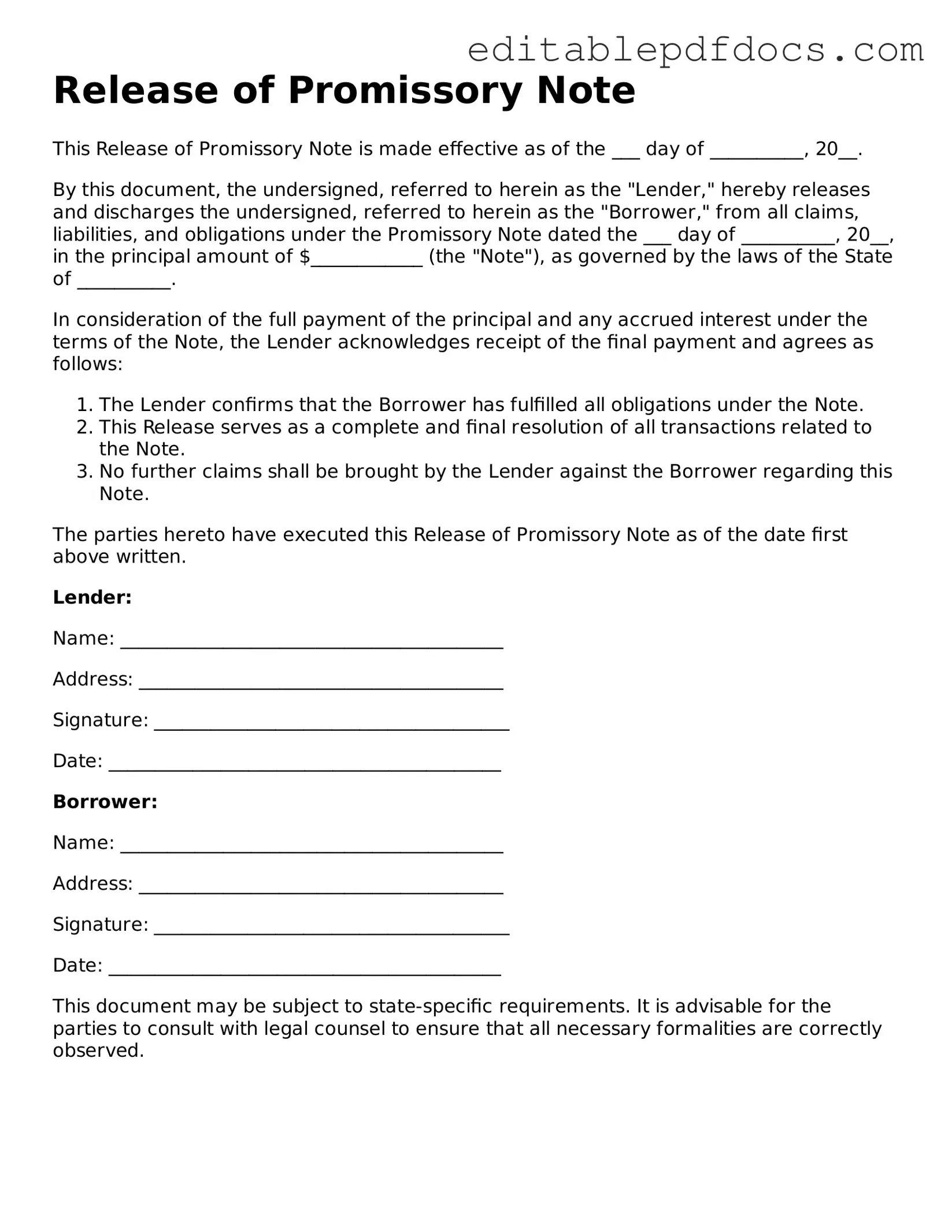Free Release of Promissory Note Document
A Release of Promissory Note form is a legal document that signifies the cancellation of a promissory note, thereby releasing the borrower from their obligation to repay the loan. This form is essential for both lenders and borrowers to formally acknowledge that the debt has been settled. For those looking to complete this process, fill out the form by clicking the button below.
Open Editor Now
